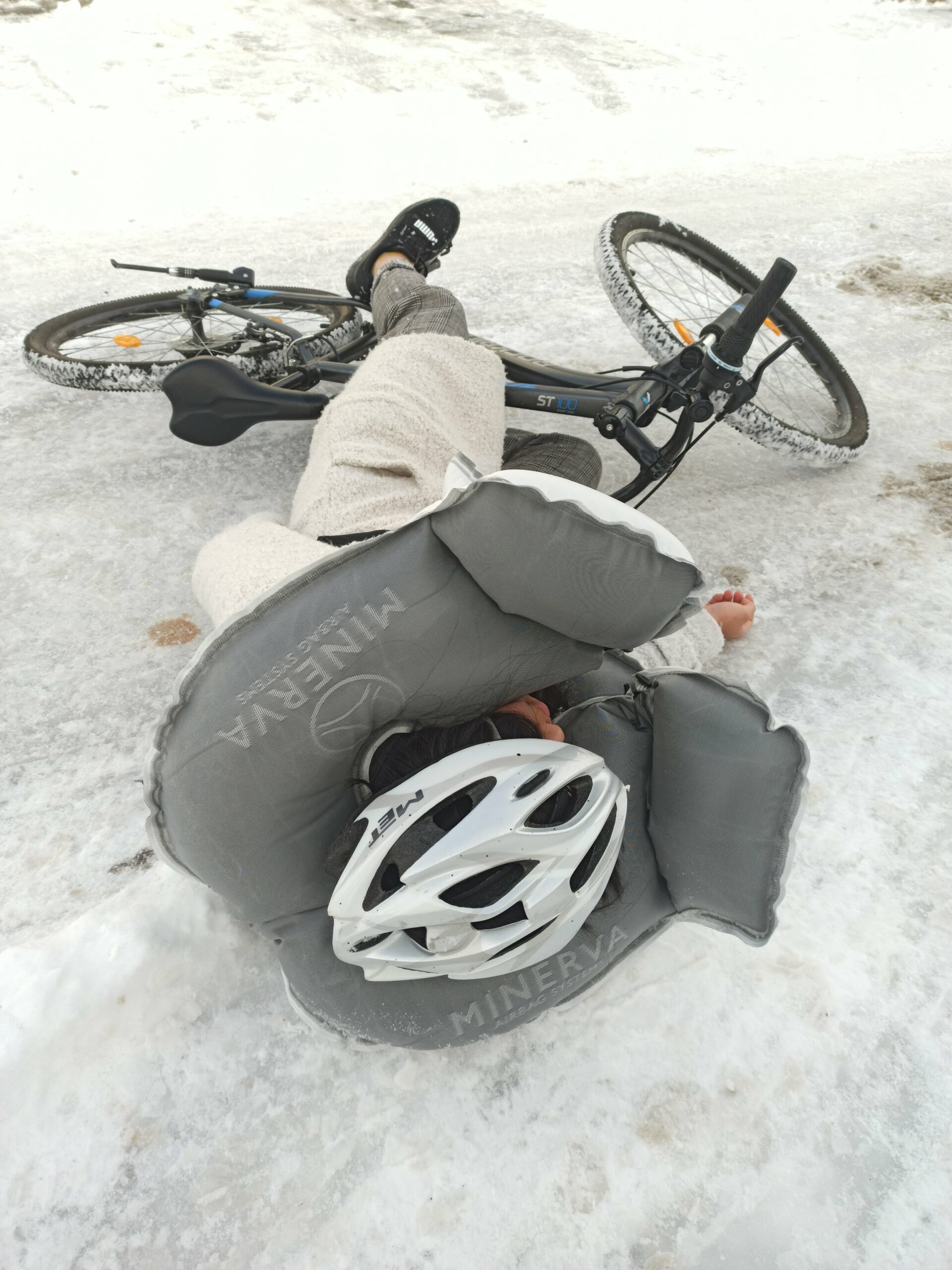Cycling in winter: Tips for safety and comfort in the cold season
Cycling in winter is a challenge - but with the right equipment and preparation, you can be safe on the road even in snow, ice and cold. Here are the best tips for winter cycling so that you feel safe on every ride and can enjoy your tours even in winter conditions.
1. winter tires: Safe through ice and snow
The first step to safe winter cycling is the right tires. They provide the necessary grip and prevent dangerous slipping:
- Winter tires with tread: Coarser treads offer better grip on snow and mud.
- Studded tires: Tires with studs are ideal for icy roads - they prevent slipping.
- Adjust the tire pressure: Reduce the air pressure slightly to increase traction.
Tip: Studded tires should be fitted in good time before temperatures fall permanently below 0°C.
2. lighting: always remain visible
In winter, the days are shorter and visibility is often poor. Good lighting ensures greater safety:
- Bright front and rear lights: LED lamps with high luminosity are essential.
- Reflectors: Spoke reflectors and reflective clothing increase your visibility.
- Reflective clothing: Vests, jackets or pants with reflective elements make you visible even in the dark.
Recommendation: Headlamp for additional light to recognize unevenness in the ground at an early stage.
3. clothing: Stay warm and dry
Cold and wet conditions place high demands on your clothing. Protect yourself with the right layering principle:
- Base layer: Moisture-wicking functional underwear.
- Middle layer: Insulating clothing such as fleece or wool sweaters.
- Outer layer: Waterproof and windproof jacket.
Also think about gloves, a hat or headband and shoe covers for warm, dry riding.
4. adapt your driving style:
Winter road conditions require a cautious driving style:
- Slow speed: Reduce your speed for more safety on slippery roads.
- Take bends gently: Lean less into the bend and avoid abrupt braking.
- Keep your distance: Braking distances increase on snow and ice - more distance from other road users is important.
5. bike care in winter:
Winter conditions are tough on your bike. Regular maintenance is necessary to keep it in good shape:
- Cleaning: Remove salt, snow and dirt after every ride.
- Oiling the chain: Use special winter chain oil.
- Check the brakes: Check the brake pads regularly.
- Fit mudguards: They keep out snow and dirt.
6. winter helper for your bike:
With practical equipment, you can master even difficult winter conditions:
- Bike stand: A sturdy stand makes it easier to park your bike on slippery surfaces.
- Thermos flask: Keep yourself at operating temperature with a warm drink while riding.
- Handlebar gloves: Protect your hands from the cold.
- Frame lock with cover: Protects your lock from freezing.
7. alternative routes:
In winter, cycle paths are often snow-covered or icy. Plan your route carefully:
- Use main roads: These are cleared more quickly than cycle paths.
- Know alternative routes: If traffic gets bogged down, avoid busy roads.
- Public transportation: In extreme weather conditions, you can also change to bus or train.
8. airbags for cycling in winter:
Another important aspect of safety in winter is protection against falls. In icy road conditions, you are more likely to slip or lose control of your bike. This is where airbags for cyclists come into play. These special airbags offer additional protection in the event of a fall and reduce the risk of serious injury:
- Back protection: airbag backpacks like the MASE airbag backpack protect your upper body and back in the event of a fall and cushion the impact.
- Automatic deployment: These airbags deploy in seconds as soon as a fall is detected, providing protection before you hit the ground.
- Reusability: MASE airbags are reusable after deployment and can be easily refilled so that you are well protected for your next ride.
Especially in winter conditions, when slippery roads and sudden icy conditions can cause dangerous accidents, airbag protection offers additional safety and is a valuable addition to your own equipment. Conclusion: Winter cycling - well prepared and safe on the road
With the right equipment and an adapted riding style, nothing stands in the way of winter cycling. Winter tires, reflectors, the right clothing and regular bike maintenance make all the difference. Safety comes first, so that you are safe and comfortable on two wheels even in cold weather.







